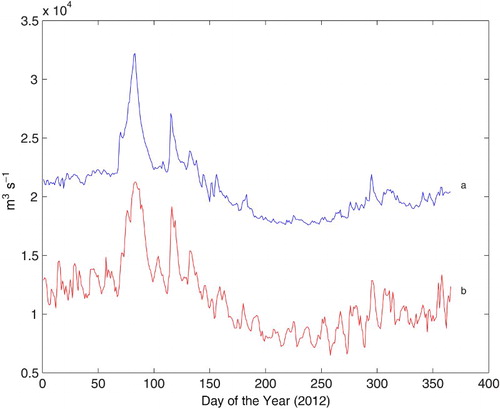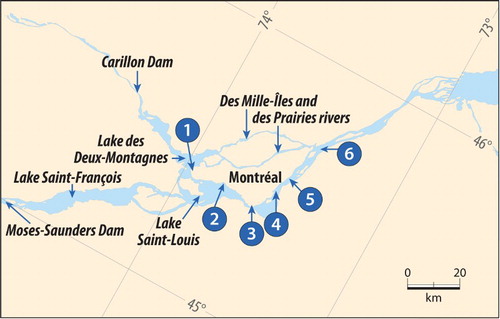Figures & data
Fig. 1 Model domain and position of water level gauges and flow sections from Lake St-Pierre to Québec.
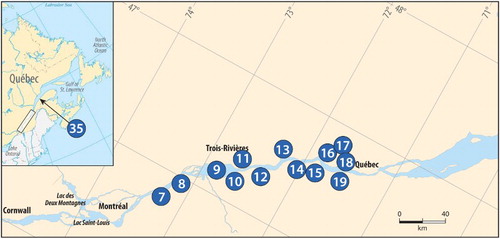
Fig. 2 Position of the water level gauges, flow sections, and meteorological stations in the downstream portion of the model domain.
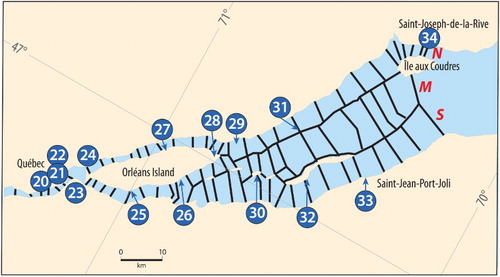
Fig. 4 Stage-discharge relationship at Pointe-Claire (Station 2) for the model upstream flow boundary conditions.
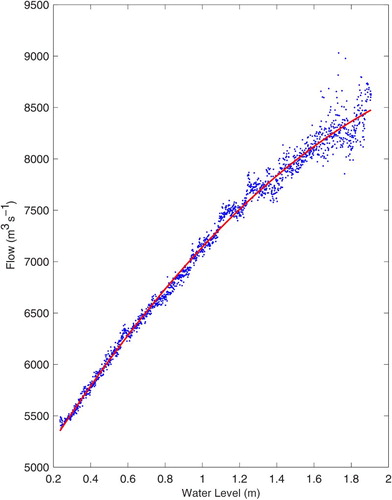
Fig. 5 Example of a storm surge observed at the Saint-Joseph-de-la-Rive (Station 34) water level gauge.

Fig. 6 Low-frequency oscillations at High Water and Low Water marks observed at Saint-Joseph-de-la-Rive water level gauge with a 30-day moving average filter on the residual (observations minus tidal predictions). The bottom curve is the daily average flow at the Vieux-Québec section (Station 21).
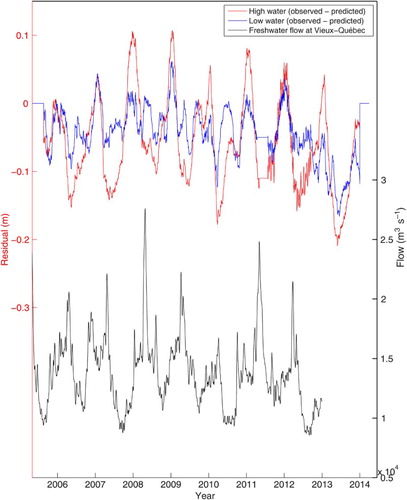
Fig. 7 Example of the water levels at the three downstream boundaries. The difference in amplitude and phase among the three is the result of the calibration process using the observed water levels at the tidal gauges upstream of the boundaries.
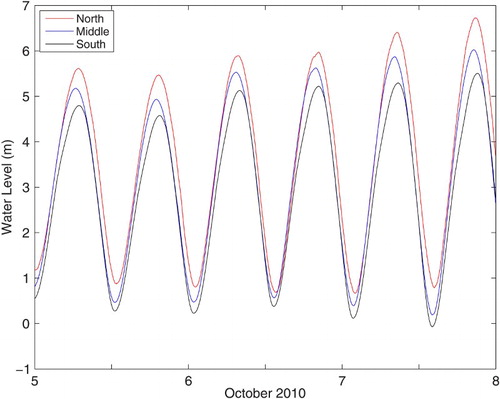
Fig. 8 Mean error, standard deviation, and γ2 value of the model results for each tidal station. The tidal gauge number refers to the consecutive numbers in .
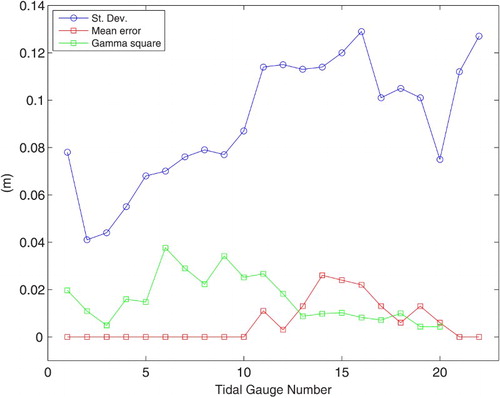
Fig. 9 Standard deviation of the model result errors at the downstream tidal stations. The tidal gauge number refers to the consecutive number of .
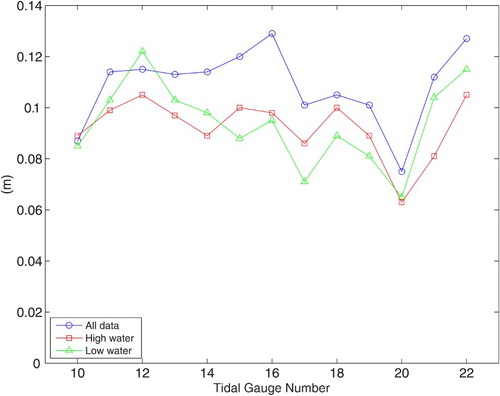
Fig. 10 Flows at the Vieux-Québec section (Station 21) derived from current measurements and from the model results, along with the ratio between the two values. The time on the abscissa is hours from 14:48 utc on 15 June 2009.
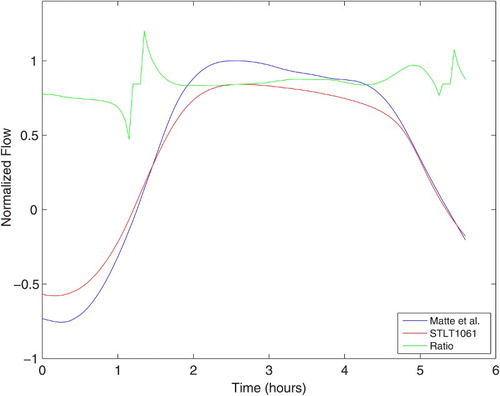
Table 1. The ratio of the model flow results to flows derived from ADCP measurements for the sections. Mean and standard deviation values are calculated excluding Station 27.
Fig. 11 Daily flow values at the Vieux-Québec section (Station 21) for the years of the hindcast period 2005–2012. The flow on the ordinate is for 2005 data; 10,000 m³ s−1 has been added consecutively to each following year for clarity.

Fig. 12 Regression between the monthly-mean flows from the present model results with the monthly-mean flows using the Bourgault and Koutitonsky (Citation1999) relationship.
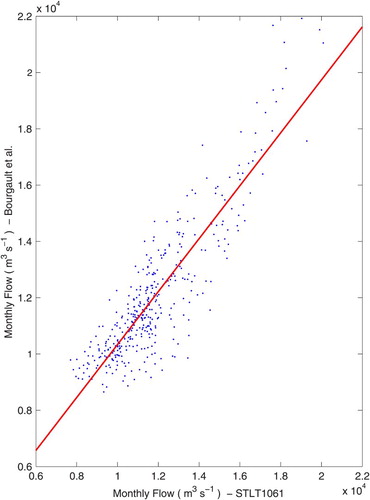
Fig. 13 Regression of daily flows between Bouchard and Morin (Citation2000), based on upstream flows, and this study.

Fig. 14 Estimated flows from Bouchard and Morin (Citation2000) for 2012 in a and this study in b; 10,000 m³ s−1 has been added to the former for clarity.
